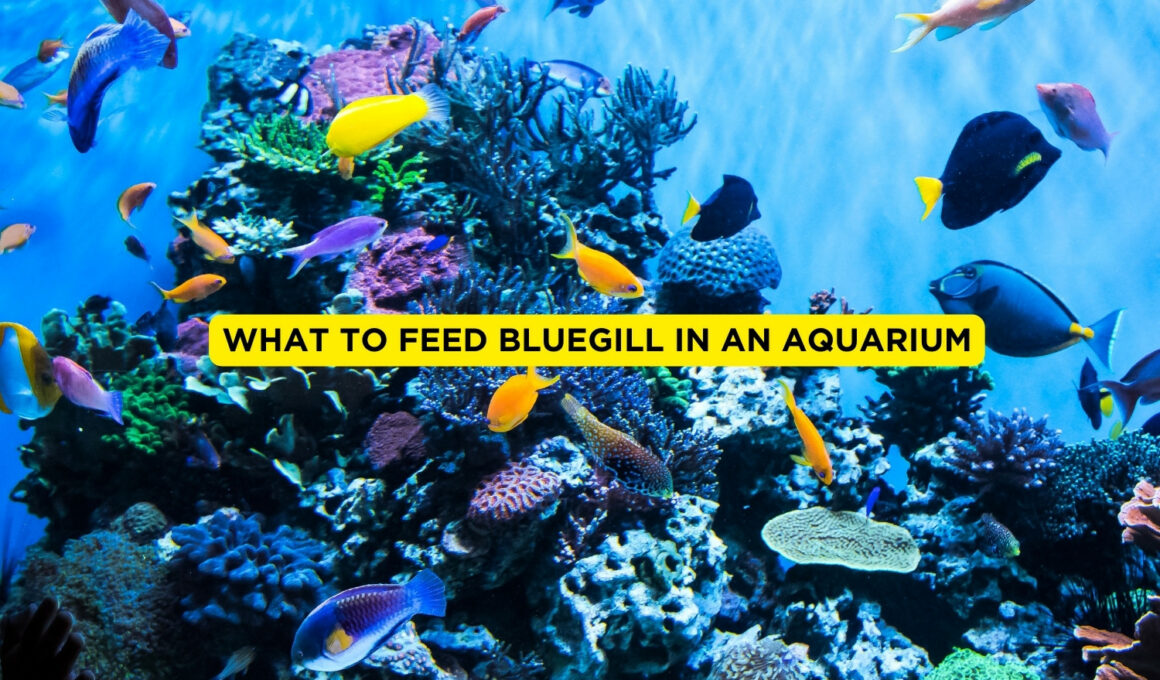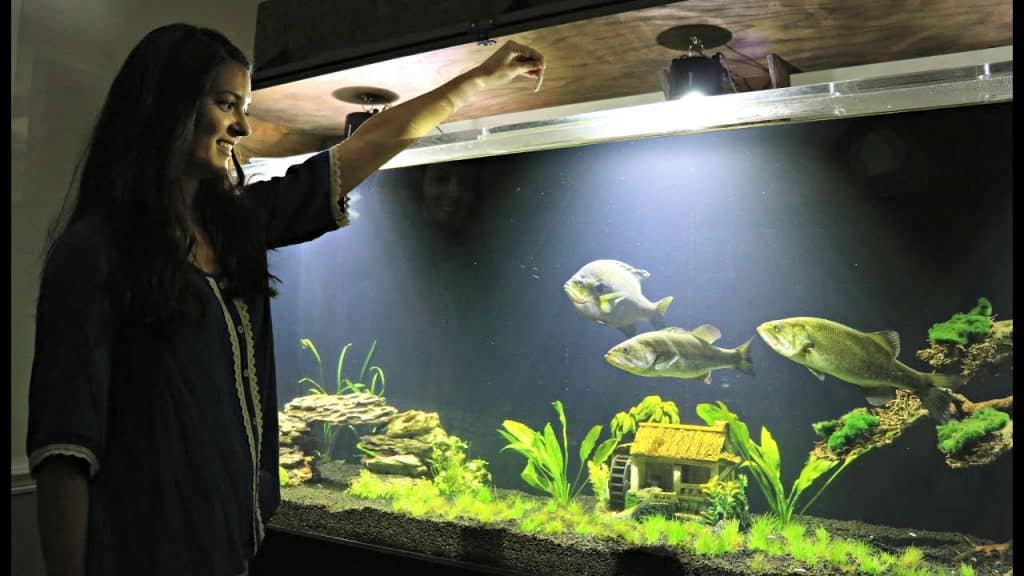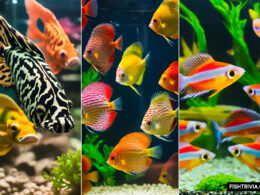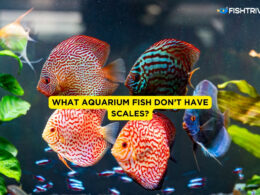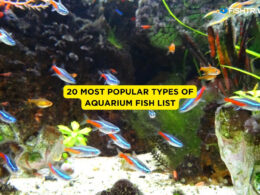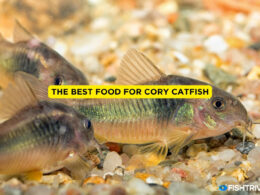In this article Show
Bluegills are in their broad division, the Rare Pygmy Sunfish. Bluegills are common sunfish of long-lasting freshwater. They can grow over 12 inches, weigh about 2 – 2,5 kilograms and sustain in domestic aquariums. For many aquarium hobbyists, Bluegills are a favorite.
Whatever kind of fish you want to stock in your tank, all of them need special care due to their various characteristics. Clean water and a big enough tank are the two important criteria. Based on the fish species you want to carry, you would have to control what they consume.
Often known by other names is Bluegills. Depending on the region, they are also known as bream, perch, border, and even lousy. They have odd habits as well. They like weed beds and tend to hide from predators, searching for small crustaceans and aquatic insects behind tall plants in an aquarium to feed.
They contribute to their brave nature through their iridescent colors and nutritious behaviors. These fish are popular for keeping the population of insects and crustaceans down. However, since they are carnivorous animals, they can eat almost everything.
In this article, we will provide you with a description of what to feed to these Bluegills that will match their habitat.
Taking Care of Bluegill Fish
Bluegills are very easy to take care of when it comes to feeding when you are nervous about your bluegill, we would like to tell you. In reality, several of them also strike aquarium plants you may have set up.
So, you would be glad to hear that bluegill like mosquitoes, fresh prawns, earthworms, and even sow bugs if you are concerned your bluegill does not get the right nourishment or have small choices.
To ensure that you give your blackberries the best treatment you can, you have to remember a few crucial things below.
Bluegill Fish Care
Feed bluegills to eat what they need, like natural flora, smaller aquatic fish, insects, and fresh-looking fish food. Don’t overfeed them, particularly if you’ve got no crawfish or different all-eating lower residents within the tank.
If the tank is enclosed with a protoctist, use an Anti-protoctista hand tool or pad to clear the tank surfaces. If needed, amend the water by simply retreating 25% of the water at a time. Leave the tank at least 75% of the water. Once the temperature is dynamic, don’t cut live plants.
Water Temperature
You have to mind the water temperature. It must vary between 64 and 75 degrees. It is very essential for the Bluegill for their breeding. To ensure this temperature you can use a water temperature measure alongside the tank or pool as well as a motorized flow pump to keep the water going on.
Younger bluegills should be relocated into larger ponds as they expand and change in size – from pellets and vegetables to foods like small fish and worms. Bluegills can eat almost anything. Live or dead Fish or Insects. We will describe them to you separately.
What Should Be Fed To Bluegill Fish In The Aquarium
Ensuring that your bluegill fish is well-fed can somewhat look like a daunting task but it isn’t as this specie of fish is pretty easy to please and feed without actually breaking the bank. The following are the meals that you can safely offer to Bluegill fish;
Fish
Not just any fish can be fed to bluegill fishes, so it’s best to be very sure you are feeding your fish with the right kind of seafood. That said, here are the types of fish that can be offered to Bluegills;
1. Shad Fish
In Aquariums Bluegills can also be fed tiny shad fish. Blackcurrants feed on gizzard shad, threadfin shad, or even tiny US shad with tiny mouths that make them easy to eat. Although that’s hard for custodians to identify, it’s one of the foods they ingest. After the catch, it’s hard to keep Shads alive because evidence suggests they will panic and die too soon before they can be put in the tank!
2. Fish Pellets
Bluegills are also going to eat pellets of fish. The aquarium straps for several keepers are floating fish pellets and frozen blood worms. Fish feed for aquarium fish is also common for bluegill farmers and is readily accessible and inexpensive to purchase.
3. Sucker Fish
These small fish have downwards-pointed cylindrical bodies which pick – and surprisingly, for many fish, including bluegills, these are common food choices. You certainly would love feeding on these because your tank has big bluegills.
4. Bait Fish
Among many Bluegill keepers, Bait Fish has become a common food choice. It’s easy to touch, so bluegills want to eat it too. Data shows that larger bluegills tend to consume small fish, in particular baitfish. And in most animal shops the great thing is that they’re conveniently accessible, as well as inexpensive.
5. Minnow Fish
Bluegills may consume other types of little fish, as they are carnivores. Minnows are one of the most common alternatives. This does not harm the fish and blood does not shed. You may clothe the tail of the tongue. Usually, the flexible top or bottom half is removed to keep people from swimming. They wind up like starving beasts, which spurs the Bluegills to drive them down.
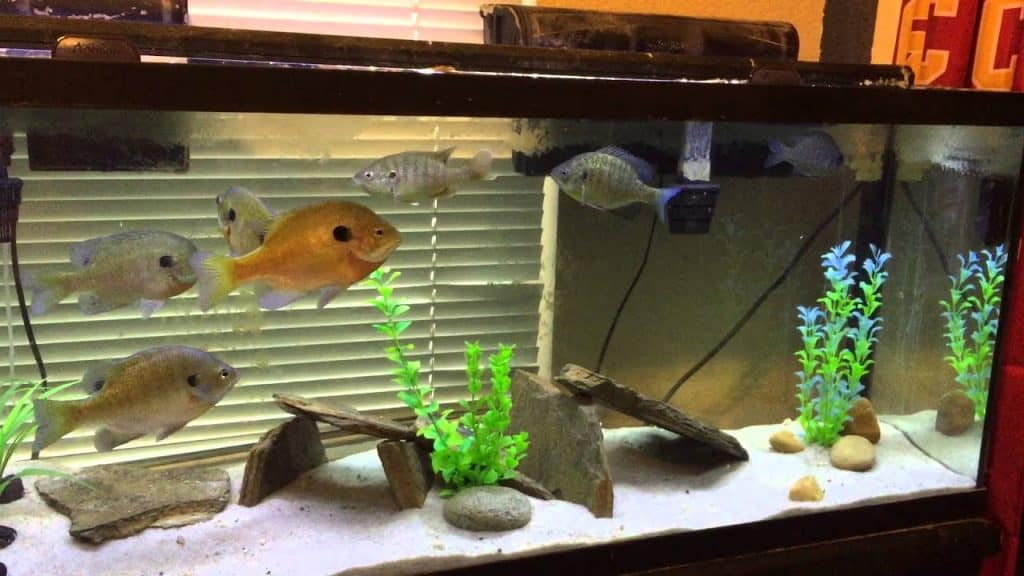
Insects
Insects are snack treats for bluegill as well, so don’t be shocked when your fish happily consumes the following insects;
1. Larvae
From larvae to full-grown adults, bluegills consume everything. Crickets and mealworms are some of the common options seen on the internet. Currently, some bluegills do feed their grasshoppers.
2. Terrestrial Insects
These fish even like nightcrawlers and other ground bugs. You will eat bees, spiders, moths, gnats, and ants and when they are in the wild, they can also fly. Bluegills have been found particularly in wild animals to enjoy chasing and feeding on these bugs.
3. Water Insects
Often, Bluegills feed on aquatic bugs! They can consume mosquitoes’ larvae, flies’ larvae, and other species and seeds. Over the season, they give the bluegill a strong nutritional chance and are a big food supply.
4. Crustaceans
Bluegill’s diet also includes crustaceans. They are often sold in the fish market, and feed shops and can be stored as tankmates or added during meals. Bluegills usually enjoy shrimps and small scabies of freshwater.
Above mentioned foods are Bluegill’s favorite. For their nutrition, you can feed them these. And as mentioned, you don’t have to worry much, as they feed on almost everything. Just you need to take care of them.
Conclusion
Besides, you don’t need to think about feeding them their food because these fish can eat just about everything! When it comes to eating, bluegills are easy to watch out for.
Indeed, plenty of them will also suck in your aquatic plants and feed on algae in bigger fish ponds. Since these fish eat absolutely something, you don’t have to think about keeping their food directly.
As all, fish are living creatures and need love even if they are simple or difficult to care for.






